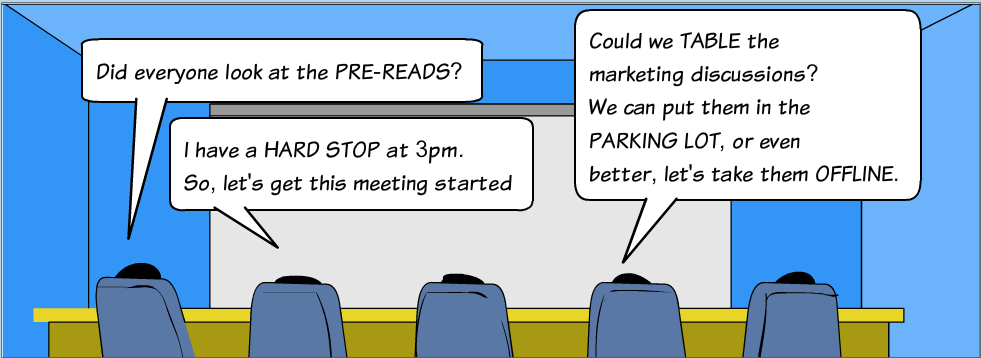They'll know what it means
May 26, 2020 Laura Moats

Jargon, Slang, and Idioms
Me: “What does “cycle the power mean?”
SME: “The user will understand this.”
Ever have a subject matter expert (SME) tell you this? (Notice that I made sure to spell out SME.) Will the user really understand the jargon even if I don’t? Maybe, but if they don’t, the instructions are useless.
When I was editor for a technical writing department, I would ask the writer, do you understand what you are writing? Often the writer did not. I believe that if you don’t understand what you are writing about, there are a lot of other people who also won’t understand. Using jargon, slang, and idioms in your writing sets up barriers for your reader. If you don’t understand what you are reading, you won’t read it. It’s that simple.
Although you can argue that the targeted reader will understand the terminology, everyone is new once, and you will leave that reader out. It is better to write simply and clearly, reaching all readers, than to show-off your industry terminology, and exclude or frustrate others.
According to Forbes, a 2011 study by Joachim Hansen and Michael Wänke proved that using complexed language removed trust. When using abstract statements, the person receiving the message is less likely to believe it.
Jason Fried, the founder of Basecamp and author of Rework, stated, “Jargon is insecurity.”
Jargon, slang, and idioms describe three different types of language use, but each can cause considerable confusion and alienate your reader.
Jargon refers to special words or expressions that are used by a particular profession or group and are difficult for others to understand.
Examples: core competency, buy-in, actionable, paradigm shift, secret sauce
Slang is a type of language that consists of words and phrases that are regarded as very informal, are more common in speech than writing, and are typically restricted to a particular context or group of people. Slang may be acceptable when speaking, but should never be used in technical writing.
Examples: sweet spot, multi-tasking, one-off, take-away, ping.
Idiom refers to a group of words established by usage as having a meaning not deducible from those of the individual words.
Examples: bird’s-eye view, beat around the bush, once in a blue moon, pull yourself together, missed the boat.
Idioms are not just specific to a language but can also be regional. I grew up outside Washington, D.C. I went to college at Penn State. A friend was from Pittsburgh, PA. When she told me that she was going to “red-up” something, I had no clue what she meant. She was referring to getting something ready or clean. We only grew up 6 hours apart from one another.
Although I am not specifically speaking about the issues jargon, slang, and idioms can pose in translation, the results can be quite comical. Try it yourself. You do not need to know the language to see the results. Go to Google translate, enter one of these expressions in English. Translate it to another language (you choose). Take that translation and re-translate it to English. You can have hours of fun.
I cannot emphasize enough, that as Instructional Designers and Technical Writers, our job is to communicate. Avoiding pretentious language and writing simply for all to understand, means we are doing our jobs well.
